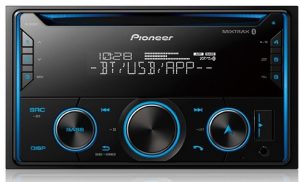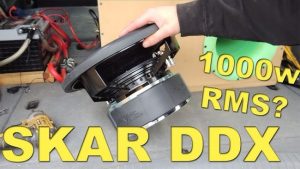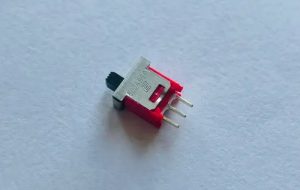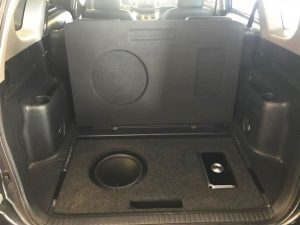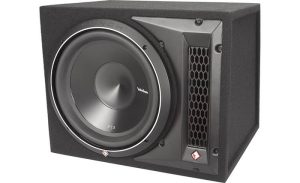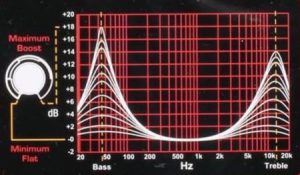Choosing the right amplifier for two 12-inch subwoofers can transform your car audio system. A well-matched amp delivers powerful, clean bass that elevates your listening experience. However, picking the wrong one risks underwhelming performance or even damaging your subs. This guide breaks down everything you need to know to find the perfect amp for your 12-inch subwoofers. From understanding power ratings to matching impedance and selecting the right features, we’ll help you make an informed decision.
Contents
- Why the Right Amp Matters for Your Subs
- Understanding Subwoofer Specifications
- Choosing the Right Amp: Key Considerations
- Top Amp Recommendations for Two 12-Inch Subs
- Installation Tips for Optimal Performance
- Common Mistakes to Avoid
- How to Test Your Amp and Subs
- Budget vs. Premium Amps: What’s the Difference?
- Enhancing Your Car Audio System
- Final Thoughts
Why the Right Amp Matters for Your Subs
Your subwoofers rely on an amplifier to supply the power they need to produce deep, resonant bass. Too little power leaves your subs sounding weak, while too much can overdrive them, causing distortion or even permanent damage. For two 12-inch subs, the amp must provide enough wattage to drive both efficiently while maintaining sound clarity. A properly matched amp ensures your system hits hard, stays reliable, and delivers the audio quality you crave.
Beyond power, the amp’s compatibility with your subs’ impedance (measured in ohms) and wiring configuration plays a critical role. Mismatched impedance can reduce efficiency or strain the amp. By understanding your subs’ specifications and pairing them with the right amplifier, you’ll unlock their full potential.
Understanding Subwoofer Specifications
Before shopping for an amp, check your subwoofers’ specs. Here are the key factors to consider:
RMS Power Rating
The RMS (Root Mean Square) power rating indicates how much continuous power your subs can handle. Unlike peak power, which reflects short bursts, RMS is the reliable measure for matching an amp. For example, if each 12-inch sub has an RMS rating of 500 watts, your pair needs an amp delivering around 1000 watts RMS total. Always aim for an amp with slightly higher RMS output than your subs’ combined rating to ensure clean power delivery without clipping.
Impedance (Ohms)
Impedance, measured in ohms, affects how much power your amp delivers. Most 12-inch subs have a 2-ohm or 4-ohm impedance. Dual voice coil (DVC) subs offer more wiring flexibility, allowing you to adjust the final impedance. For instance, wiring two 4-ohm DVC subs in parallel can yield a 1-ohm or 2-ohm load. Check your subs’ impedance and wiring options to ensure compatibility with your amp.
Sensitivity
Sensitivity measures how efficiently a sub converts power into sound. Higher sensitivity (e.g., 90 dB or above) means the sub requires less power to produce loud bass. If your subs have lower sensitivity, you’ll need a more powerful amp to achieve the same volume.
Frequency Range
Subs are designed to handle low frequencies, typically 20-200 Hz. Ensure your amp can drive these frequencies without distortion. Some amps include a low-pass filter to focus on bass frequencies, which is ideal for subwoofers.
Choosing the Right Amp: Key Considerations
With your subwoofer specs in hand, it’s time to pick an amp. Here’s what to focus on:
Power Output
Match the amp’s RMS power output to your subs’ combined RMS rating. For two 500-watt RMS subs, look for an amp delivering 800-1200 watts RMS. This range provides headroom, preventing the amp from working too hard, which can cause distortion. Monoblock amps, designed specifically for subwoofers, are a great choice for delivering high power to low-impedance loads.
Impedance Compatibility
Ensure the amp is stable at the impedance of your wired subs. For example, if you wire your two subs to a 2-ohm load, the amp must be 2-ohm stable. Many modern amps are stable at 1-ohm or 2-ohm, offering flexibility for different wiring setups. Check the amp’s specs to confirm it matches your configuration.
Class of Amplifier
Amplifiers come in different classes, with Class D being the most popular for subwoofers. Class D amps are compact, efficient, and deliver high power with minimal heat. They’re ideal for driving two 12-inch subs in a car audio system. Class AB amps, while less efficient, offer excellent sound quality and are another option if space and heat aren’t concerns.
Wiring Configuration
How you wire your subs affects the amp’s performance. Series wiring increases impedance, while parallel wiring decreases it. For example:
- Two 4-ohm single voice coil (SVC) subs wired in parallel result in a 2-ohm load.
- Two 4-ohm DVC subs wired in parallel can achieve a 1-ohm or 2-ohm load, depending on the configuration.
Use an online wiring calculator to determine the final impedance based on your subs and wiring setup. Then, choose an amp that’s stable at that impedance.
Additional Features
Look for amps with features that enhance performance and protect your system:
- Low-Pass Filter (LPF): Filters out high frequencies, ensuring only bass reaches your subs.
- Bass Boost: Increases bass output at specific frequencies for a punchier sound.
- Remote Gain Control: Allows you to adjust the amp’s output from the driver’s seat.
- Thermal Protection: Prevents overheating, extending the amp’s lifespan.
Top Amp Recommendations for Two 12-Inch Subs
To simplify your search, here are some top-performing amps for powering two 12-inch subwoofers. These models balance power, efficiency, and reliability.
1. Rockford Fosgate R2-1200X1
- RMS Power: 1200 watts at 2 ohms
- Impedance: 1-ohm, 2-ohm, 4-ohm stable
- Features: Class D design, low-pass filter, bass boost, remote gain control
- Why It’s Great: This monoblock amp delivers clean, powerful bass for two 12-inch subs. Its compact size fits easily in most vehicles, and the adjustable filters let you fine-tune the sound.
2. Skar Audio RP-1200.1D
- RMS Power: 1200 watts at 1 ohm
- Impedance: 1-ohm stable
- Features: Class D, low-pass filter, bass boost, thermal protection
- Why It’s Great: Ideal for low-impedance setups, this amp provides high power at an affordable price. It’s a favorite among car audio enthusiasts for its reliability and performance.
3. Alpine S-A60M
- RMS Power: 600 watts at 2 ohms
- Impedance: 2-ohm, 4-ohm stable
- Features: Class D, low-pass filter, compact design
- Why It’s Great: Perfect for smaller setups or subs with lower RMS ratings, this amp delivers crisp bass in a space-saving package.
4. Kicker 46CXA800.1T
- RMS Power: 800 watts at 2 ohms
- Impedance: 1-ohm, 2-ohm, 4-ohm stable
- Features: Class D, low-pass filter, bass boost, remote control
- Why It’s Great: Kicker’s reputation for quality shines in this versatile amp, which offers plenty of power and easy tuning for optimal bass.
Installation Tips for Optimal Performance
Once you’ve chosen your amp, proper installation ensures maximum performance. Follow these tips:
- Use the Right Wiring: Invest in a high-quality wiring kit with thick-gauge power and ground cables to handle the amp’s current draw.
- Secure the Amp: Mount the amp in a well-ventilated area to prevent overheating. Avoid placing it directly on the subwoofer box.
- Tune the Amp: Adjust the gain, low-pass filter, and bass boost to match your subs and listening preferences. Avoid setting the gain too high, as it can cause clipping.
- Check Grounding: Ensure the amp is properly grounded to prevent noise or electrical issues.
- Test the System: Play music at different volumes to confirm the subs and amp work harmoniously without distortion.
Common Mistakes to Avoid
Steer clear of these pitfalls when choosing and installing your amp:
- Undersizing the Amp: An underpowered amp forces your subs to work harder, leading to distortion or damage. Always match or slightly exceed the subs’ RMS rating.
- Ignoring Impedance: Mismatching impedance reduces power output or strains the amp. Double-check your wiring and amp compatibility.
- Skipping Fuses: A fuse protects your system from electrical surges. Always include an appropriately rated fuse near the battery.
- Overlooking Ventilation: Amps generate heat, especially during heavy use. Ensure proper airflow to avoid thermal shutdowns.
How to Test Your Amp and Subs
After installation, test your system to ensure everything works as expected. Play a variety of music tracks with strong bass to evaluate performance. Listen for clarity, depth, and balance. If the bass sounds muddy or distorted, revisit your amp settings or wiring. Use a multimeter to verify the amp’s output matches your subs’ requirements. If issues persist, consult a professional car audio installer for troubleshooting.
Budget vs. Premium Amps: What’s the Difference?
Budget amps, like those from Skar Audio or Planet Audio, offer solid performance at a lower price. They’re great for casual listeners or first-time builders. Premium amps, such as JL Audio or Focal, provide superior sound quality, advanced features, and better build quality. They’re ideal for audiophiles or competition-grade systems. Consider your budget and audio goals when deciding. For most users, a mid-range amp from brands like Rockford Fosgate or Kicker strikes the perfect balance.
Enhancing Your Car Audio System
Pairing your amp and subs with other components elevates your system. Add a high-quality head unit for better sound control and connectivity. Upgrade your speakers to complement the powerful bass. Consider a sound processor or equalizer for precise tuning. Adding a capacitor can help stabilize power delivery during bass-heavy tracks, especially in high-power systems.
Final Thoughts
Finding the perfect amp for two 12-inch subwoofers doesn’t have to be overwhelming. By matching the amp’s power output and impedance to your subs’ specs, you’ll achieve booming, clear bass that enhances every drive. Focus on RMS ratings, impedance stability, and useful features like low-pass filters. Brands like Rockford Fosgate, Skar Audio, and Kicker offer reliable options for various budgets. With proper installation and tuning, your car audio system will deliver the heart-pounding sound you’ve been dreaming of.
Ready to upgrade your setup? Check your subwoofer specs, choose an amp from our recommendations, and start building your dream audio system today.

